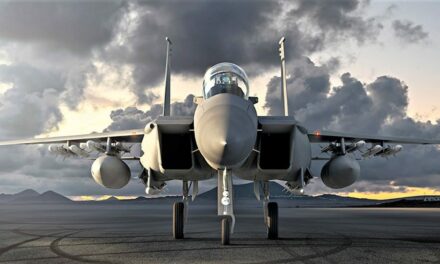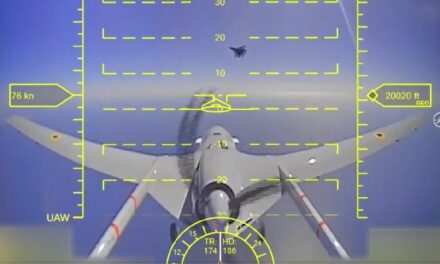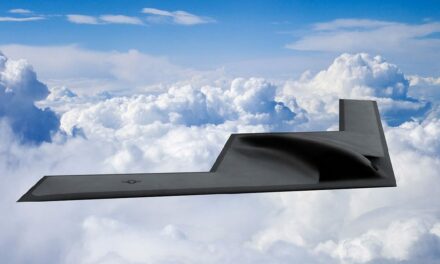We support our Publishers and Content Creators. You can view this story on their website by CLICKING HERE.
Canada’s defense policy has long suffered from neglect, complacency, and misplaced priorities, but under Prime Minister Justin Trudeau’s government, these issues have reached an alarming nadir. As global instability rises—from the ongoing war in Ukraine to increasing tensions in the Arctic and Indo-Pacific—the stakes for Canada’s security and credibility have never been higher. Yet, despite repeated warnings and mounting international expectations, the Trudeau government has failed to meet its obligations, leaving Canada’s military underfunded, undermanned, and ill-prepared for the challenges ahead.
This failure has had serious consequences for Canada’s position on the global stage. Once a respected middle power with a reputation for punching above its weight, Canada has become a laggard in military preparedness and collective security. While allies shoulder the heavy burdens of modern defense, the Trudeau government’s consistent inaction risks turning Canada into a liability for the very alliances that underpin its security. To address these challenges, Canada must embrace a new approach—one informed by the principles of strategic restraint, prioritizing focused investments that serve its most pressing security needs without succumbing to global overreach.
The State of Canadian Defense
The Trudeau government’s commitment to defense has been lackluster at best and actively negligent at worst. Canada’s defense spending sits at around 1.29% of GDP, far below NATO’s 2% target. Even this figure is inflated by including non-military expenditures like veterans’ benefits and coast guard operations—spending that, while important, does nothing to enhance combat readiness or deterrence. This creative accounting has been a convenient way for the government to give the illusion of effort without addressing the root problem: chronic underinvestment in hard military capabilities.
Under Trudeau’s leadership, this underinvestment has left Canada’s armed forces struggling to fulfill even basic responsibilities. Reports from within the Canadian government reveal a force hollowed out by recruitment shortfalls, aging equipment, and inadequate infrastructure. Canada’s fleet of CF-18 fighter jets, first introduced in the early 1980s, remains in service despite being technologically obsolete. The Royal Canadian Navy faces significant capability gaps, with aging frigates and delays in replacing its Victoria-class submarines.
These deficiencies are not merely embarrassing; they are dangerous. As tensions in the Arctic grow, driven by Russian militarization and Chinese economic ambitions, Canada’s lack of operational readiness leaves it vulnerable in a region critical to its sovereignty and economic future. Meanwhile, Canada’s limited contributions to NATO and other alliances have raised questions about its reliability as a partner.
Global Threats, Trudeau’s Apathy
Canada’s defense challenges are not unfolding in a vacuum. The war in Ukraine has demonstrated the enduring relevance of hard power in deterring aggression. NATO allies like Poland, the Baltic states, and the United States have stepped up their defense spending, recognizing the importance of credible deterrence. Even traditionally neutral nations like Sweden and Finland have shifted course, joining NATO in the face of Russian aggression.
The Trudeau government, however, appears stuck in a state of denial. Despite repeated wake-up calls, including public criticisms from U.S. officials and NATO leaders, it has failed to translate rhetoric into action. A recent column by John Ivison in the National Post aptly described Canada as “slumbering” while others prepare for the realities of a dangerous world—a slumber directly enabled by Trudeau’s disinterest in serious defense policy.
This apathy is particularly evident in the Arctic. With the region becoming a new theater for great power competition, Canada’s lack of investment in Arctic defense infrastructure and capabilities is glaring. Russia has built dozens of military bases and deployed advanced weapons systems in its Arctic territories. China, despite having no Arctic territory, has declared itself a “near-Arctic state” and increased its presence through scientific expeditions and economic ventures.
Canada, by contrast, has failed to develop a coherent Arctic defense strategy under Trudeau’s leadership. The promised modernization of the North Warning System, a critical component of NORAD’s early warning system, remains years behind schedule. Investments in icebreakers and Arctic-capable patrol vessels have been insufficient to meet the demands of operating in the harsh northern environment.
Strategic Restraint: A Path Forward
Canada’s failure to meet its defense obligations highlights a deeper issue: the absence of a coherent grand strategy. Rather than aimlessly pursuing broad commitments and ill-defined goals, Canada should adopt a strategy of restraint—prioritizing its core security interests while avoiding unnecessary entanglements in conflicts and regions that do not directly affect its sovereignty or alliances.
A restraint-based approach would focus Canada’s defense efforts on three key areas:
Arctic Sovereignty and Security: The Arctic represents one of Canada’s most vital strategic interests. With vast natural resources, critical shipping lanes, and increasing geopolitical competition, this region demands focused investment. Modernizing the North Warning System, expanding Arctic-capable infrastructure, and increasing the Canadian Armed Forces’ presence in the region should be top priorities. Unlike global power projection, these efforts directly serve Canada’s sovereignty and economic security
North Atlantic and North Pacific Defense: As a North Atlantic, North Pacific, and Arctic power, Canada’s security is intrinsically tied to the stability of these regions. Enhancing capabilities that support NATO’s core mission of territorial defense and contributing meaningfully to NORAD’s continental defense responsibilities are essential. This includes investing in modern submarines, upgrading naval capabilities, and ensuring interoperability with U.S. and allied forces.
Streamlining Procurement and Personnel Management: Chronic delays and cost overruns in defense procurement have plagued Canada for decades. Streamlining these processes and focusing on acquiring capabilities that align with the country’s strategic priorities—rather than flashy but impractical systems—will maximize the effectiveness of defense spending. Similarly, addressing the Canadian Armed Forces’ recruitment and retention crisis is vital. Improving pay, benefits, and quality of life for service members will ensure a robust and capable military force.
By adopting a restraint-focused strategy, Canada can align its defense policy with its economic realities and geopolitical position, ensuring that every dollar spent delivers tangible results.
Implications for the United States
Canada’s defense underperformance also has significant implications for its most important ally, the United States. The bilateral security relationship between Canada and the U.S. is deeply integrated, particularly through NORAD, which is tasked with defending North America from aerospace and maritime threats. Canada’s failure to adequately modernize its contributions to NORAD—most notably the long-delayed upgrades to the North Warning System—forces the U.S. to shoulder a disproportionate burden for continental defense.
In the Arctic, where U.S. and Canadian interests align closely, Canada’s inability to project power or maintain a credible military presence weakens the region’s overall security posture. As Russia and China expand their activities in the Arctic, Washington is left to compensate for Canada’s gaps, stretching its already strained resources. This imbalance is not sustainable, particularly as the U.S. faces growing demands in the Indo-Pacific and Europe.
Moreover, Canada’s lack of investment in NATO erodes alliance unity at a time when the U.S. is pressing European members to increase their defense contributions. Washington’s credibility in advocating for greater burden-sharing is undermined when its closest neighbor fails to meet the same standard. The Trudeau government’s inaction thus complicates U.S. efforts to rally NATO against shared threats, from Russian aggression to China’s global ambitions.
A Canada that embraces a restraint-based strategy and focuses on its core security priorities would not only enhance its own defense posture but also strengthen the U.S.-Canada alliance. By contributing meaningfully to Arctic security, continental defense, and NATO commitments, Canada can relieve some of the pressure on its southern neighbor while reinforcing the shared security architecture that underpins North American and transatlantic stability.
Conclusion
The Trudeau government’s record on defense is not just a failure of policy; it is a failure of leadership and imagination. As the world becomes more dangerous, Canada’s leaders must recognize that the luxury of complacency is no longer an option. Meeting the challenges of the 21st century requires more than symbolic gestures and rhetorical commitments. It demands real investment, real action, and a grand strategy rooted in restraint.
By focusing on its core security priorities—the Arctic, the North Atlantic, and the North Pacific—and avoiding unnecessary entanglements, Canada can address its defense shortcomings in a way that aligns with its strategic interests and values. This approach would not only bolster Canada’s sovereignty and credibility but also ensure its military investments deliver meaningful results while strengthening its partnership with the United States.
The time for excuses is over. Canada’s future as a respected and capable partner in global security depends on embracing restraint and rejecting the complacency that has defined the Trudeau era.
Anything less is not just embarrassing—it is a betrayal of the country’s values, interests, and future.
About the Author: Dr. Andrew Lantham
Andrew Latham earned a PhD from York University in Toronto. He is currently a professor of international relations at Macalester College in Saint Paul, Minnesota, USA; a Senior Washington Fellow with the Institute for Peace and Diplomacy, and a non-resident fellow with the think tank Defense Priorities in Washington, DC.

 Conservative
Conservative  Search
Search Trending
Trending Current News
Current News 





